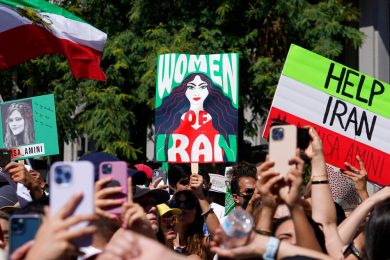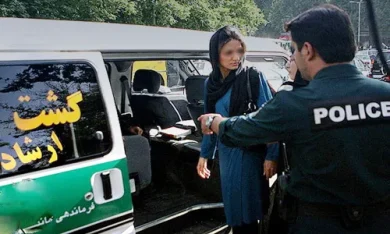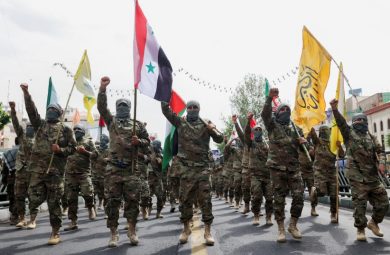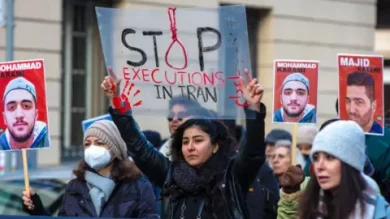The Islamic Revolutionary Guard Corps (IRGC) has transformed from a revolutionary paramilitary force into a powerful global actor that exports the Islamic Republic’s ideological and military influence far beyond Iran’s borders. Through its elite external operations wing—the Quds Force—the IRGC maintains and commands a vast proxy network across the Middle East. This network is composed of highly organized, ideologically driven, and heavily armed non-state actors including Hezbollah in Lebanon, the Houthis in Yemen, and Hamas in Gaza.
These groups function as the IRGC’s strategic assets in Iran’s regional power projection. They enable Iran to wage asymmetric warfare, destabilize adversaries, deter conventional attack, and shape the region’s political landscape—all while maintaining plausible deniability.
This analysis explores the structure, strategies, operations, and implications of the IRGC’s proxy army, focusing on its three most prominent partners: Hezbollah, Houthis, and Hamas.
1. The Quds Force: The Brain of the Proxy Network
The Quds Force is the IRGC’s clandestine foreign operations unit, created to export Iran’s revolution and support armed groups abroad.
Core Mandates:
• Organize, arm, train, and fund paramilitary groups aligned with Iranian interests
• Establish ideological and strategic alliances in conflict zones
• Undermine U.S., Israeli, and Gulf Arab influence
• Coordinate covert operations and proxy warfare
• Maintain supply corridors and military outposts across the region
Under the leadership of General Qassem Soleimani (until his assassination in 2020), the Quds Force institutionalized Iran’s proxy doctrine, building a permanent state-aligned militia structure across at least five countries.
2. Hezbollah: The IRGC’s Prototype Proxy
Origins and Evolution
• Founded: 1982 during Israel’s invasion of Lebanon
• Mission: Resistance against Israeli occupation, promotion of Iranian revolutionary Islam
• IRGC Role: Established and trained Hezbollah’s core command; continues to fund, arm, and guide its military strategy
Military Strength
• Estimated 150,000+ rockets and missiles
• Advanced drone and tunnel warfare capabilities
• Thousands of experienced fighters from the Syrian war
• Operates autonomous communication, intelligence, and cyber warfare units
Political Control
• Holds seats in Lebanon’s parliament and cabinet
• Controls parts of the Lebanese security apparatus
• Enforces parallel governance in Shia-majority areas
Operations Beyond Lebanon
• Assisted Assad regime in Syria’s civil war
• Supports other Iran-backed militias in Iraq and Yemen
• Conducts global surveillance and terrorist plots via operatives in Latin America, Europe, and Africa
Conclusion: Hezbollah is the IRGC’s most successful export—an organization with state-like powers and deep integration in Lebanon’s political and military structures.
3. Hamas and Palestinian Islamic Jihad (PIJ): The Gaza Front
Strategic Partnership
• Hamas: Sunni Islamist group that governs the Gaza Strip
• PIJ: Smaller but more ideologically aligned with Iran
• Despite Sunni-Shia differences, both receive financial, military, and strategic support from the IRGC
Support Structure
• Weapons smuggled through tunnels and via sea
• Rocket design, training, and strategic planning assistance
• Political coordination with IRGC-Quds Force leaders
• Funding through Hezbollah and IRGC front groups
Tactical Coordination
• IRGC orchestrates timing of Hamas and PIJ attacks to serve broader Iranian goals
• Hezbollah and IRGC often act as intermediaries between Tehran and Gaza
Impact
• Frequent escalations with Israel destabilize the region
• Hamas and PIJ help Iran maintain pressure on Israel without direct conflict
• Acts as ideological recruitment ground for Iran’s anti-Zionist narrative
4. Houthis (Ansar Allah): Iran’s Southern Front
Emergence and IRGC Ties
• Founded: 1990s in northern Yemen
• Militarized: After 2014 seizure of Sana’a
• IRGC Role: Provides weapons, drones, missile technology, and ideological guidance
Military Capabilities
• Long-range missile attacks on Saudi and Emirati infrastructure
• Naval mines and anti-ship missiles in the Red Sea
• Iranian-style propaganda and governance model
Strategic Value
• Threatens Gulf states and Bab al-Mandeb Strait
• Expands Iran’s influence to the Arabian Peninsula
• Serves as leverage in nuclear negotiations and regional power plays
Operational Model
• Hezbollah-trained commanders oversee training and communications
• Iranian weapons shipped via Oman, Djibouti, and the sea
• IRGC uses the Houthis to harass U.S. and Israeli assets without direct involvement
5. Iraq: The IRGC’s Most Complicated Proxy Environment
Popular Mobilization Forces (PMF)
• Created in 2014 to fight ISIS, but many groups were pre-existing IRGC clients
• Includes:
• Kata’ib Hezbollah
• Asa’ib Ahl al-Haq
• Harakat al-Nujaba
• Nominally under Iraqi command, but functionally aligned with the Quds Force
Roles and Actions
• Harass and attack U.S. troops and diplomats
• Suppress domestic opposition and reform movements
• Provide logistical links to Syria and Lebanon
• Influence elections and government appointments
Outcome
• Iraq remains a weak state with fragmented sovereignty
• IRGC-aligned militias effectively operate as a parallel government
6. Syria: From Ally to IRGC Operational Hub
IRGC Goals in Syria
• Preserve Bashar al-Assad’s regime
• Maintain the Iran-Iraq-Syria-Lebanon corridor
• Expand military bases and missile depots
• Deploy proxy fighters from Afghanistan and Pakistan
IRGC Activities
• Run drone operations from T-4, Damascus International Airport
• Build ideological centers and religious institutions
• Use Syria as a transit hub for weapons to Hezbollah
Impact
• Prolonged Syrian civil war
• Entrenchment of sectarian violence
• Increased Iranian strategic depth along Israel’s border
7. Training, Funding, and Command Integration
Training Facilities
• Inside Iran (Qom, Isfahan)
• In southern Lebanon (Hezbollah-run)
• In Syria, Iraq, and occasionally Yemen
Funding Mechanisms
• Iranian state budget allocations to IRGC
• Illicit trade and smuggling (oil, weapons, narcotics)
• Charitable foundations and front companies
• Cryptocurrency and money-laundering operations
Command and Control
• Quds Force officers embedded in proxy units
• Iranian commanders provide strategic, not tactical, direction
• Local leaders allowed some autonomy for operational legitimacy
8. Proxy Warfare Doctrine: Strategic Objectives
The IRGC’s use of proxies achieves several goals:
• Deterrence: Prevent direct strikes on Iran by threatening retaliation via proxies
• Power Projection: Extend influence without occupying territory
• Destabilization: Weaken rival governments (Saudi, Israeli, U.S. allies)
• Survivability: Avoid direct confrontation and international consequences
• Plausible Deniability: Maintain official deniability while achieving strategic effects
This model offers high reward, low cost warfare—making it central to Iranian defense doctrine.
9. Consequences for Regional and Global Security
Humanitarian Toll
• Tens of thousands dead in Syria, Yemen, Iraq
• Refugee and displacement crises
• Destruction of civilian infrastructure
Sovereignty and Governance
• Erosion of state authority in Lebanon, Iraq, and Yemen
• Rise of militia-ruled regions
• Obstruction of democratic reform and civic space
International Risk
• Attacks on shipping and energy infrastructure
• Terrorist operations abroad (e.g., AMIA bombing, U.S. embassy attacks)
• Cyberattacks, surveillance, and assassination plots in Europe and North America
10. Countering the IRGC’s Proxy Army
1. Full Terrorist Designation
• Designate the IRGC and all proxies as terrorist organizations
• Criminalize funding and cooperation
• Enable prosecution and asset freezes
2. Disrupt Financing
• Sanction banks and charities tied to IRGC logistics
• Monitor cryptocurrency and barter schemes
• Enforce secondary sanctions against enablers
3. Expose Networks
• Use open-source intelligence (OSINT) to track and name front companies
• Publicize IRGC command structures within militias
• Highlight the links between repression at home and violence abroad
4. Support Local Resistance
• Fund independent civil society and journalism in affected countries
• Strengthen legitimate state institutions and security forces
• Provide asylum and protection for whistleblowers and activists
Conclusion: Confronting a Transnational Threat
The IRGC’s proxy army is not a collection of isolated groups—it is a coordinated, strategic system of warfare that spans five countries and threatens three continents. Hezbollah, Houthis, and Hamas are not just local actors; they are the tip of Iran’s imperial spear.
Join Our Newsletter!
Stay informed with the latest updates, news, and ways to take action in the fight for justice and global security. Sign up now to get updates delivered straight to your inbox!





